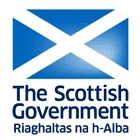Scottish National Dictionary (1700–)
Hide Quotations Hide Etymology
About this entry:
First published 1968 (SND Vol. VII).
This entry has not been updated since then but may contain minor corrections and revisions.
Quotation dates: 1741-1815, 1930
[0,0,0,0,1,1,1,1,1,1,1,1,0,0,0,0,0,0,0,0,0,0,0,1,0,0,0,0,0,0]
PASTER, n.1, v.1 Also pastre, pasture. [′pestər, ′pɑstər]
I. n. The part of a horse's leg between the fetlock and the hoof, the pastern (Uls. 1880 Patterson Gl., pastre; Per., Ayr. 1915–26 Wilson). Gen.Sc. Also attrib., and transf. of the human ankle.Sc. 1777 Caled. Mercury (28 July):
A dark-grey Gelding . . . has a white ring round his near hind leg, a little above the pasture joint.Kcb. 1815 J. Gerrond Poems 94:
Up jumped a sprightly, lively lad, Weel finished at the paster.Bnff. 1930:
Yir foal his fine lang sma' pasters.
†II. v. Ppl.adj. pastered, as regards the pastern(s), “pasterned”.Sc. 1741 Caled. Mercury (3 Sept.):
A Brown Mare . . . very rough paster'd.
You may wish to vary the format shown below depending on the citation style used.
"Paster n.1, v.1". Dictionary of the Scots Language. 2004. Scottish Language Dictionaries Ltd. Accessed 14 Dec 2025 <http://www.dsl.ac.uk/entry/snd/paster_n1_v1>


